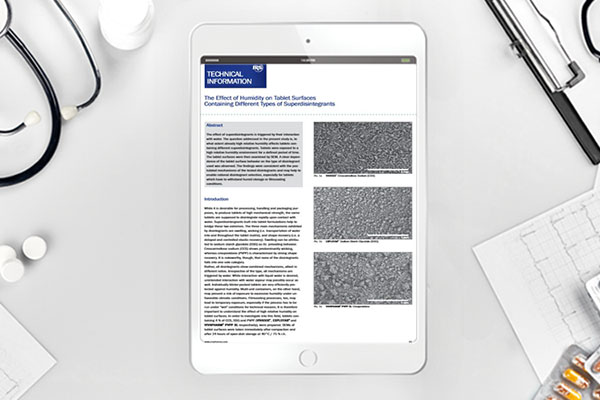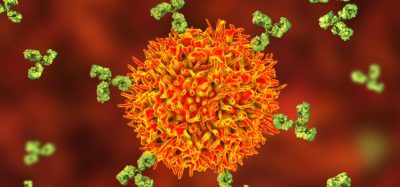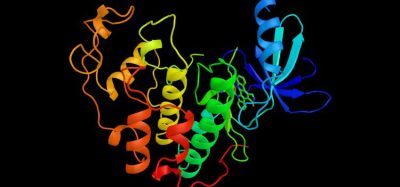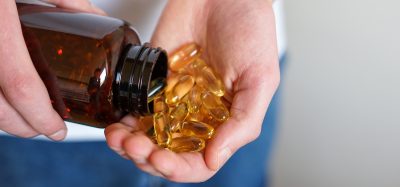Whitepaper: The effect of humidity on tablet surfaces containing different types of superdisintegrants
Posted: 14 August 2020 | JRS Pharma | No comments yet
This whitepaper studies the effect of humidity on tablet surfaces containing different types of super disintegrants.
While it is desirable for processing, handling and packaging purposes, to produce tablets of high mechanical strength, the same tablets are supposed to disintegrate rapidly upon contact with water. Superdisintergrants built into tablet formulations help to bridge these two extremes. The three main mechanisms exhibited by disintegrants are swelling, wicking (i.e.transportation of water into and throughout the tablet matrix), and shape recovery (i.e. a delayed and controlled elastic recovery). Swelling can be attributed to sodium starch glycolate (SSG) as its prevailing behaviour. Croscarmellose sodium (CCS) shows predominantly wicking, whereas crospovidone (PVPP) is characterised by strong shape recovery. It is noteworthy, though, that none of the disintegrants falls into one sole category.
Related content from this organisation
- Modernising drug delivery through gel-based technology
- Webinar: A rational approach to excipient selection for solid dose formulation and development
- Video: High adhesion coating tablet with VIVACOAT® A
- Video: Optimise continuous manufacturing using PROSOLV® EASYtab
- Precision medicine for complex chronic diseases: how near are we?
Related topics
Drug Delivery Systems, Excipients, Formulation, Ingredients, Manufacturing, QA/QC, Research & Development (R&D)










